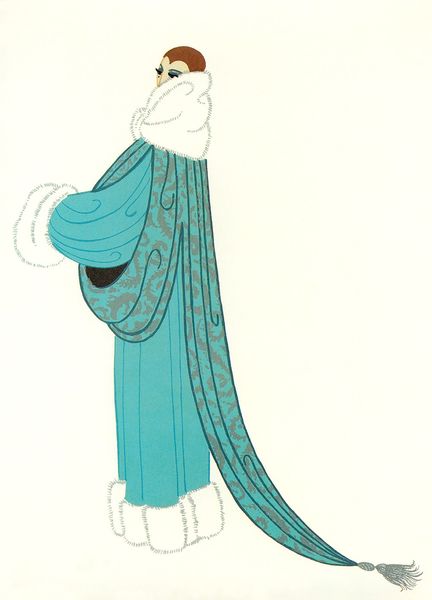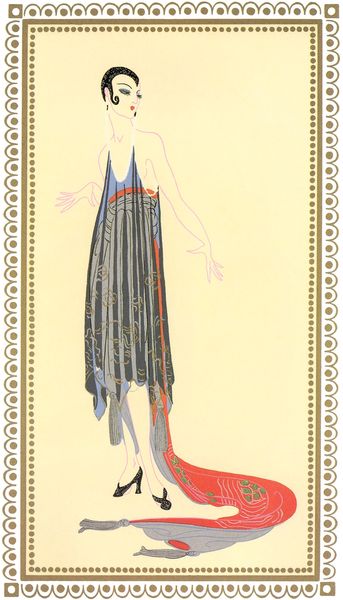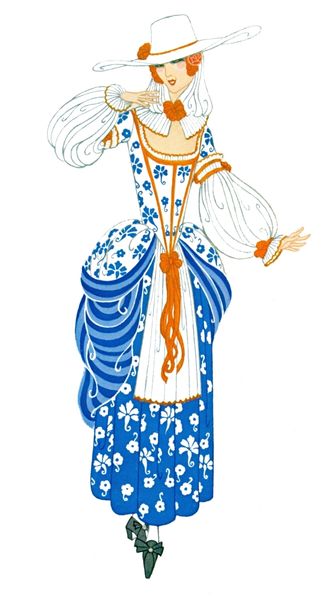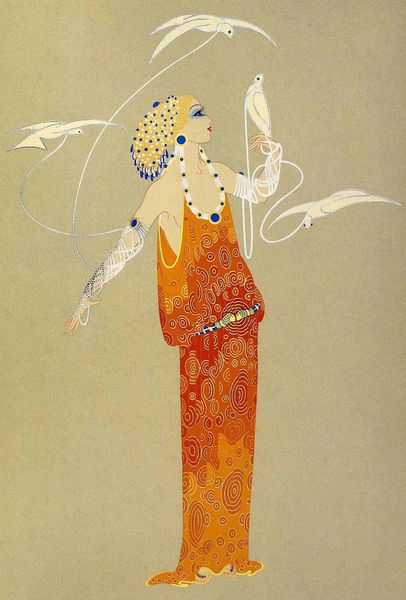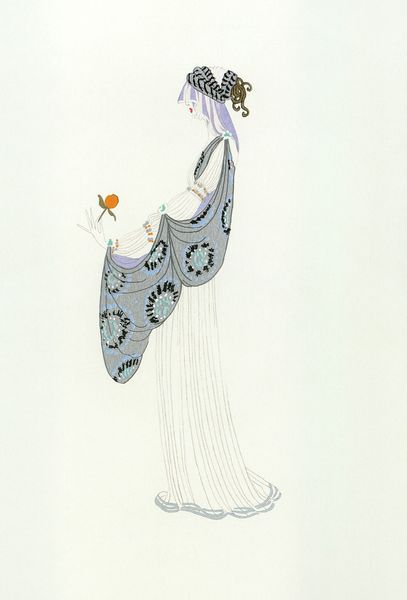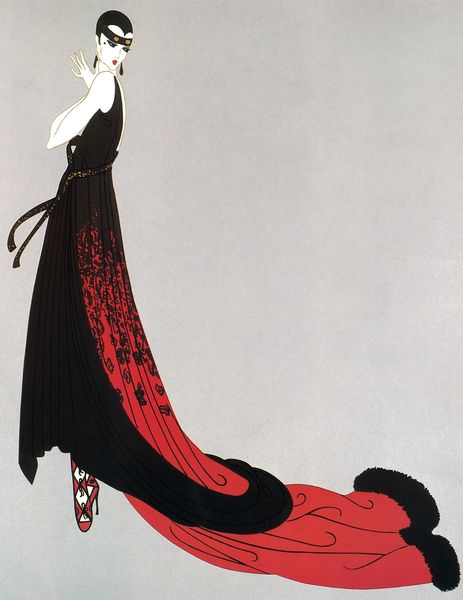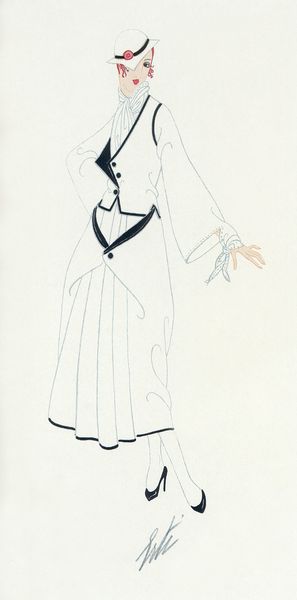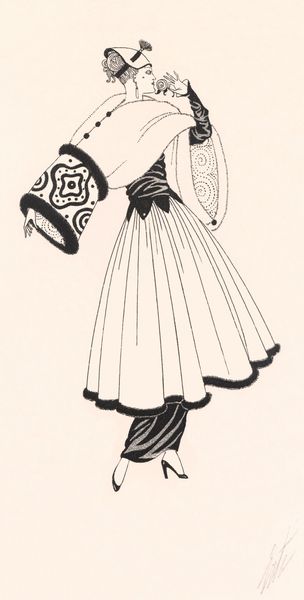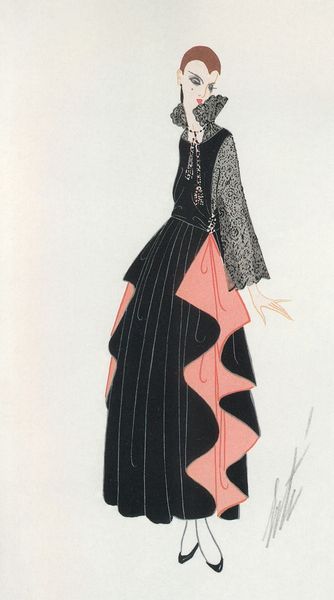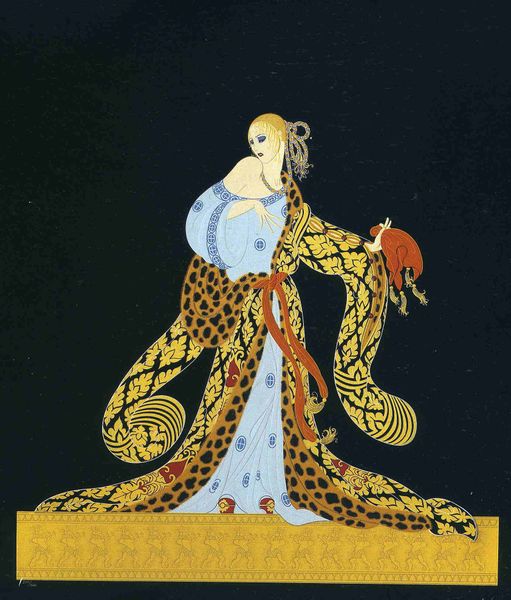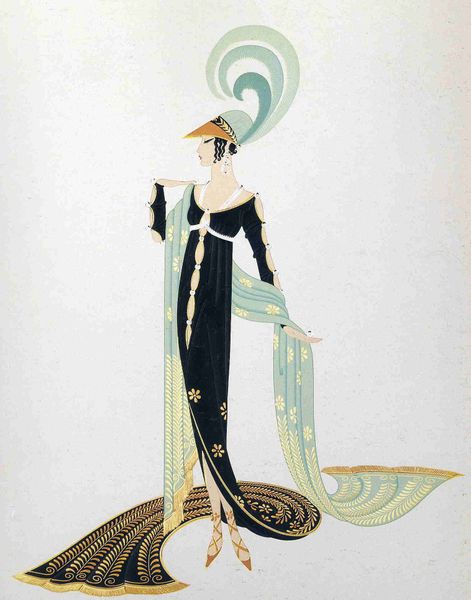
drawing
#
portrait
#
art-deco
#
drawing
#
figuration
#
costume
#
line
#
dress
#
female-portraits
Copyright: Erte,Fair Use
Editor: This drawing by Erte features Ganna Walska in what appears to be a costume from Faust. The lines are so clean and elegant; she almost seems like an illustration from a fairy tale. What catches your eye when you look at this piece? Curator: Immediately, I’m drawn to how Erte uses clothing, especially hats, as potent symbols. Look at the elaborate headwear. What figures come to mind, mythologically, ritually, or historically? Editor: I suppose the shape of her hat reminds me of medieval paintings, like a princess. Curator: Precisely! The head covering alters the perceived identity. She transcends her role as just Ganna Walska and embodies aspects of maidenhood and power associated with those archetypes, all while alluding to a specific operatic character. Then note how the dress, in muted tones, both reveals and conceals. Does this dynamic resonate with the themes present in "Faust"? Editor: That’s a great point. In "Faust," there's a constant struggle between appearance and reality, good and evil, concealment and revelation. I hadn't thought of how her clothing contributes to that! The vertical lines of the dress emphasize that struggle through contrasting columns of plain and decorated panels. Curator: And notice the cascade of her vibrant red hair. Throughout cultures, red hair carries symbolic weight connected to passion, strength, and sometimes otherness. Editor: Seeing all of these familiar symbols makes this piece more understandable; the emotional weight they bring emphasizes the artist's intended subject and gives me something to personally latch onto. Curator: Indeed. By recognizing these embedded cultural artifacts, the portrait gains multiple layers of interpretation, beyond just surface beauty or fashion. It speaks volumes about Erte's own dialogue with history.
Comments
No comments
Be the first to comment and join the conversation on the ultimate creative platform.
